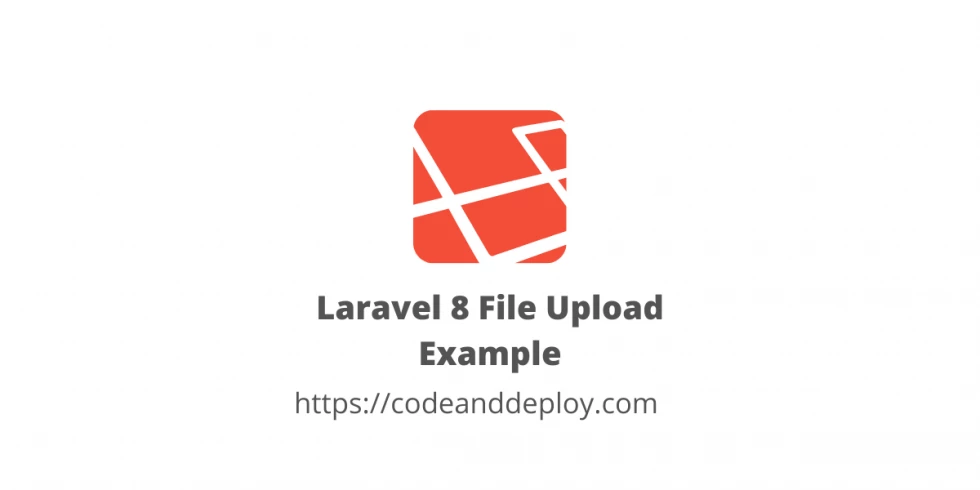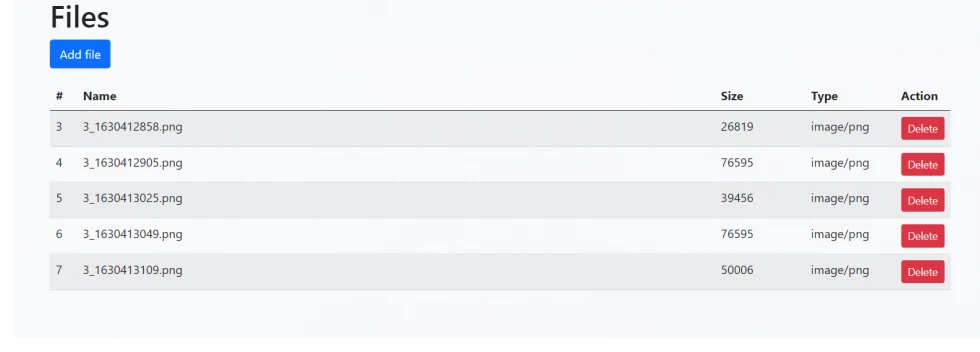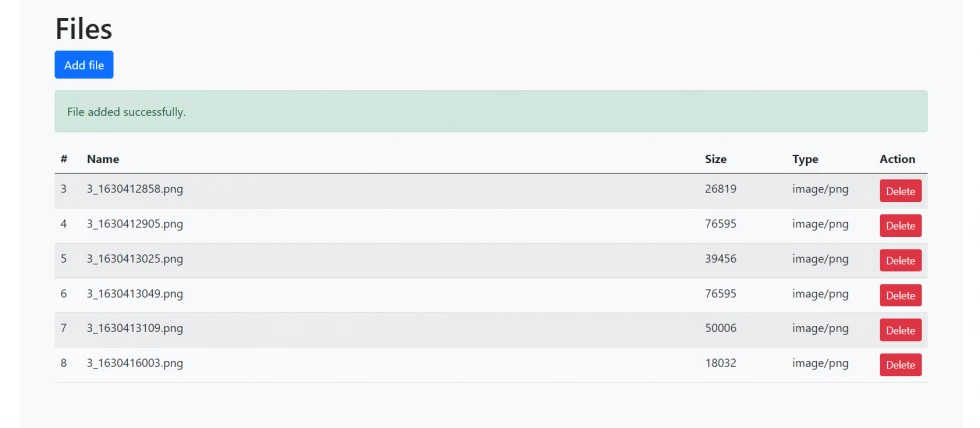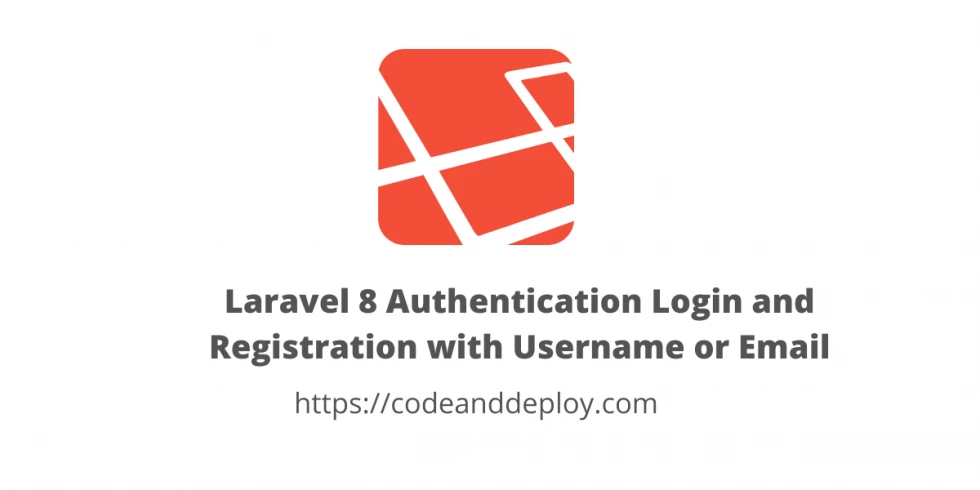Laravel 9 File Upload Example
I will be going to share how to implement a simple Laravel 9 file upload with a database implementation. And we will associate the file with the current user login.

In this post, I will be going to share how to implement a simple Laravel 9 file upload with a database implementation. We will save the generated file name base on time, size, and mime-type, and associate it with the current user logged. When developing an application using Laravel usually the file upload is always present even on a simple system.



Just follow my simple steps and learn from them.
Laravel File Upload
I assume that you have your Laravel 9 Project already in your local so we will skip that process. For more information on how to install Laravel just visit their documentation.
Okay, let's start.
Step 1: Create file upload migrations
First, we will create our file table migrations for our File model. Run the following command to do it:
php artisan make:migration create_files_tableThen we will add our migrations field. See below the complete code for our migrations.
<?php
use Illuminate\Database\Migrations\Migration;
use Illuminate\Database\Schema\Blueprint;
use Illuminate\Support\Facades\Schema;
class CreateFilesTable extends Migration
{
/**
* Run the migrations.
*
* @return void
*/
public function up()
{
Schema::create('files', function (Blueprint $table) {
$table->id();
$table->unsignedBigInteger('user_id');
$table->string('name');
$table->string('type');
$table->string('size');
$table->timestamps();
$table->foreign('user_id')
->references('id')
->on('users')
->onDelete('cascade');
});
}
/**
* Reverse the migrations.
*
* @return void
*/
public function down()
{
Schema::dropIfExists('files');
}
}
Next, you have to run:
php artisan migrateStep 2: Create file upload controller and model
Use the command below to create your FileController with the File model:
php artisan make:controller FilesController --model=FileStep 3: Create Laravel file upload routes
Now, let's create your routes for our Laravel file upload:
/**
* File Upload Routes
*/
Route::get('/files', 'FilesController@index')->name('files.index');
Route::get('/files/add', 'FilesController@create')->name('files.create');
Route::post('/files/add', 'FilesController@store')->name('files.store');Step 4: Setup Model
Next, we will set up our File model. See below the completed setup.
<?php
namespace App\Models;
use Illuminate\Database\Eloquent\Factories\HasFactory;
use Illuminate\Database\Eloquent\Model;
class File extends Model
{
protected $table = 'files';
protected $fillable = [
'user_id',
'name',
'type',
'size'
];
use HasFactory;
}
Step 5: Setup Controller
Kindly see below the complete code of our controller including the file upload in store() method.
<?php
namespace App\Http\Controllers;
use App\Models\File;
use Illuminate\Http\Request;
use Illuminate\Http\UploadedFile;
use App\Http\Requests\StoreFileRequest;
class FilesController extends Controller
{
/**
* Display a listing of the resource.
*
* @return \Illuminate\Http\Response
*/
public function index()
{
$files = File::all();
return view('files.index', [
'files' => $files
]);
}
/**
* Show the form for creating a new resource.
*
* @return \Illuminate\Http\Response
*/
public function create()
{
return view('files.create');
}
/**
* Store a newly created resource in storage.
*
* @param StoreFileRequest $request
* @return \Illuminate\Http\Response
*/
public function store(StoreFileRequest $request)
{
$fileName = auth()->id() . '_' . time() . '.'. $request->file->extension();
$type = $request->file->getClientMimeType();
$size = $request->file->getSize();
$request->file->move(public_path('file'), $fileName);
File::create([
'user_id' => auth()->id(),
'name' => $fileName,
'type' => $type,
'size' => $size
]);
return redirect()->route('files.index')->withSuccess(__('File added successfully.'));
}
}
Step 6: Create StoreFileRequest
Now let's create a request class for a store/uploading file. Run the command below:
php artisan make:request StoreFileRequestAfter the StoreFileRequest class is generated kindly check the code below for our validation:
<?php
namespace App\Http\Requests;
use Illuminate\Foundation\Http\FormRequest;
class StoreFileRequest extends FormRequest
{
/**
* Determine if the user is authorized to make this request.
*
* @return bool
*/
public function authorize()
{
return true;
}
/**
* Get the validation rules that apply to the request.
*
* @return array
*/
public function rules()
{
return [
'file' => 'required|file|mimes:jpg,jpeg,bmp,png,doc,docx,csv,rtf,xlsx,xls,txt,pdf,zip'
];
}
}
Step 7: Create View
First, we will create our index.blade.php see below the complete code:
@extends('layouts.app-master')
@section('content')
<div class="bg-light p-5 rounded">
<h1>Files</h1>
<a href="{{ route('files.create') }}" class="btn btn-primary float-right mb-3">Add file</a>
@include('layouts.partials.messages')
<table class="table table-striped">
<thead>
<tr>
<th scope="col">#</th>
<th scope="col">Name</th>
<th scope="col">Size</th>
<th scope="col">Type</th>
<th scope="col">Action</th>
</tr>
</thead>
<tbody>
@foreach($files as $file)
<tr>
<td width="3%">{{ $file->id }}</td>
<td>{{ $file->name }}</td>
<td width="10%">{{ $file->size }}</td>
<td width="10%">{{ $file->type }}</td>
<td width="5%"><a href="{{ $file->type }}" class="btn btn-danger btn-sm">Delete</a></td>
</tr>
@endforeach
</tbody>
</table>
</div>
@endsection
Second, create.blade.php for our uploading file.
@extends('layouts.app-master')
@section('content')
<div class="bg-light p-5 rounded">
<h1>Add file</h1>
<form action="{{ route('files.store') }}" method="post" enctype="multipart/form-data">
@include('layouts.partials.messages')
@csrf
<div class="form-group mt-4">
<input type="file" name="file" class="form-control" accept=".jpg,.jpeg,.bmp,.png,.gif,.doc,.docx,.csv,.rtf,.xlsx,.xls,.txt,.pdf,.zip">
</div>
<button class="w-100 btn btn-lg btn-primary mt-4" type="submit">Save</button>
</form>
</div>
@endsection
As you can see from our input=file we added accept attribute with a value of ".jpg,.jpeg,.bmp,.png,.gif,.doc,.docx,.csv,.rtf,.xlsx,.xls,.txt,.pdf,.zip" it will help to only accept base on specified file extensions.
Thank you for reading. I hope it helps.
Happy coding :)











Leave a Comment